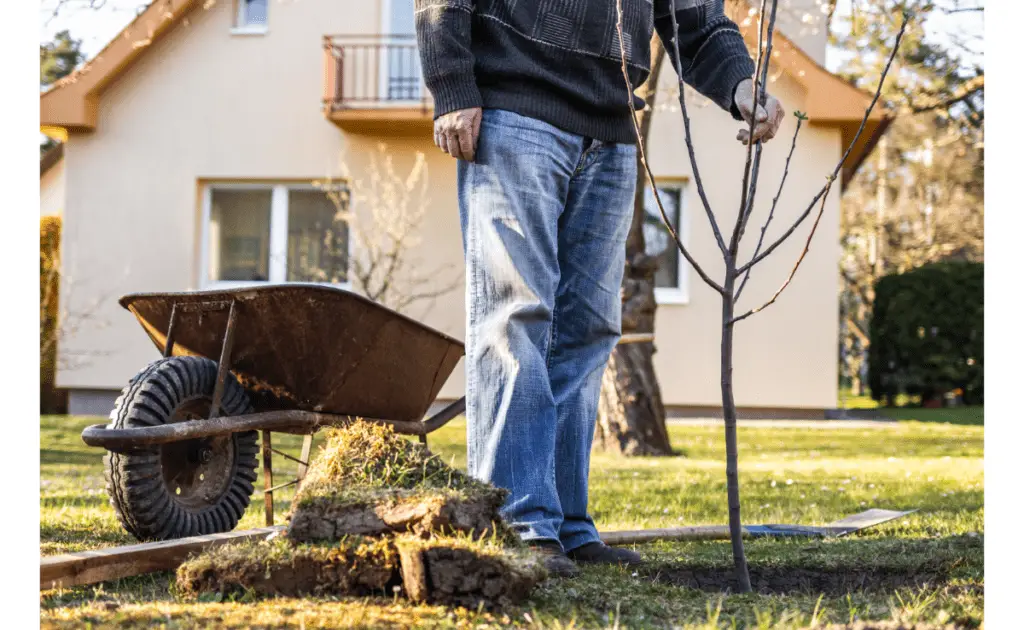
The best time to plant a fruit tree is in the springtime before the buds of new growth start. This ensures that the tree gets an early start to its growing season and has plenty of time to grow throughout the year. There are actually certain kinds of fruits that can be planted during other times which you should keep in mind before deciding on when to plant.
Should You Prune Fruit Trees After Spring Planting?
A spring planting is when you plant a fruit tree or flowering shrub outside during the warmer months of the year. Spring plantings are an option for people who live in places where winters are mild – it’s easier to wait until winter has passed and ground temperatures warm up before digging a hole for your new tree. Some fruit trees are also more likely to experience winter damage if they’re planted in cold soil, so waiting until the ground warms up can protect your investment in some cases.
Newly planted fruit trees are often pruned in late winter or very early spring before new growth begins. Pruning interrupts the tree’s hardiness zone signaling process, which is intended to protect it from cold damage by triggering bud development on warmer, sun-facing branches that are less likely to be damaged. If you’ve ever pruned a tree or shrub in early spring, you probably noticed that the pruning cuts took a long time to heal over – sometimes several weeks. If your fruit tree was pruned after it was planted, or if you planted another type of tree (or shrub) and plan to prune it sometime in early spring, give your newly cut branches time to heal before exposing them to the cold.
Should I Put Mulch Down After I Plant A New Fruit Tree?
Every gardener has his or her own style, but there’s one thing that all gardeners agree on: mulching is important. Mulches work by creating a barrier between your plants and the ground to prevent the soil from getting too cold and wet during winter months. Mulching also keeps weeds from sprouting, limits the amount of water that evaporates off the soil surface in summer months, and can protect shallow-rooted plants from severe frosts.
Although mulching is important every year, it’s especially important for new plantings because young trees and shrubs are more susceptible to cold damage than more mature specimens. Plus, the root systems of young plants are not very developed – especially when they’re planted in cold soil! Covering the ground around your new tree or shrub with mulch will insulate the roots and keep them from being exposed to extreme temperatures.
Many gardeners mulch their fruit trees every year after planting, but you don’t have to wait until spring if you don’t want to. It’s perfectly fine to mulch your trees when the ground is still very cold in November and December (for example). Do not use rocks or other inorganic mulches – these can make it difficult for young tree roots to grow, and they may also cause damage when the soil freezes and thaws.
How Wide the Area for Planting Fruit Trees Should Be?
Selecting the correct planting area is an important step in growing fruit trees. The roots of fruit trees are extremely sensitive to compacted soil – this is especially true if you’re planting your fruit tree in a lawn area where your mower has been running over the same path every week, creating ridges from wear. If your soil is compacted, the roots of your new fruit tree may grow in a circle rather than branch out to search for water. This can lead to stunted growth or even death if left uncorrected.
For these reasons, it’s important that you do not plant young trees too close together. The recommended distance between young fruit trees is approximately 8 feet for dwarf apples, 12 feet or more for semi-dwarf apples, 45 feet for large apple trees, 50 feet for pears, and 25 feet for cherries. Keep in mind that these are general guidelines, if you have room to adjust your planting arrangement you may increase the spacing between trees for increased airflow, which will benefit all the trees in your yard.
Fruit trees typically need to be watered once or twice a week if we experience several consecutive dry days – during periods of drought, mulching and watering is particularly important. Whether you live in an area where irrigation isn’t available or if you simply prefer not to use this.
I Bought a Fruit Tree Online, Do I Plant in the Spring or Fall?
It depends on when you received it – If your fruit tree arrived in the mail during early spring, go ahead and plant it right away. This way, the roots will have enough time to start growing before winter sets in.
If you received your fruit tree in the fall (or if you’re planting a bare-root fruit tree), keep it indoors until springtime. Store it in a cold, but not freezing, location such as the garage or your basement until it’s time to plant. Learn more about growing fruit trees indoors in this post!
When you’re ready to plant your fruit tree, be sure to take care of the roots before putting the tree in the ground – this will help ensure that they do not dry out and die after planting. If your tree is in a container, gently knock it on the sides to remove most of the loose soil. Then turn it upside-down and let any remaining soil fall through the drain holes in the pot. Fill the bottom of your container with some compost (for trees in containers) and water thoroughly – this will help keep the remaining roots damp as they continue to grow.
If you received your fruit tree bare-root, gently shake off the soil and try not to damage or disturb the roots too much in the process. Then soak the roots in a bucket of water for an hour or two (or until they’re completely saturated). Planting bare-root trees shouldn’t be more than 1 or 2 days after you receive it – if you have to delay planting for any reason, keep your fruit tree in a cool, moist location.
If you’re planting a fruit tree in the spring, it’s safe to plant right away. If you received your fruit tree in the fall or winter, keep it indoors until springtime and follow the directions above for prepping the roots before planting.

